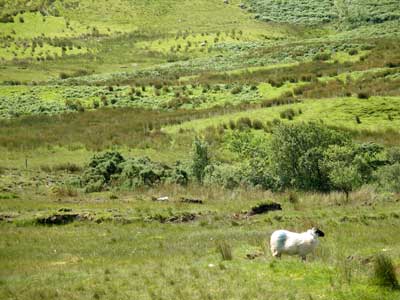An ancient, but not necessarily rare breed of Scottish sheep, bred traditionally on Scottish hills so that the meat has good flavour. The Blackface breed is the most numerous breed in Britain accounting for over three million ewes, representing 16% of the British pure-bred ewe flock. The vast majority are found in Scotland. They are versatile, adaptable and hardy. They are good milkers and produce low-fat meat.
Monastery records of the 12th century tell of the Dun or Blackface breed of sheep. The monks used the wool for their clothes, and also exported large amounts to Europe. In the 16th century, King James IV of Scotland established an improved Blackface flock in Ettrick Forest. During the 17th and 18th centuries, it was known as the Linton Sheep, West Linton in Peeblesshire being the main sale for the type. In the early 19th century, the breed was taken from Dumfriesshire and Lanarkshire and introduced into the north of Scotland, but due to the high price of cheviot wool the Blackfaces were cleared off the hills in favour of the cheviot. This continued until 1860, when the wool prices reached the same level and the farmers realised that the blackface, with its ability to survive and reproduce in adverse weather conditions, was the best suited breed to utilise hill and mountain grazing.
All Blackfaces are horned, with black or black and white face and legs. The fleece should be free of black fibre and can vary from short, fine wool used for carpets and tweeds to strong coarse wool, which is sold mainly for the Italian mattress trade.
There are several distinct types within the breed. These have evolved over the years, influenced by climate, environment and grazing quality. This gives the breed the advantage of eing able to produce species to suit every climatic condition. The Scottish Blackface, which are the most numerous, are sub-divided into three types:
The Perth type, a large-framed sheep with a medium to heavy wool, is found mainly in north-east Scotland, south-west England and Northern Ireland.
The Lanark type, which is dominant in much of Scotland and areas of Ireland, is of medium size, with shorter wool than the Perth type.
Over the past thirty years, a strong influence of Newton Stewart type has been introduced, the integration of Lanark and Newton Stewart bloodlines, as well as benefiting both milking ability and hardiness, has helped create a more uniform and identifiable breed.
In the north of England, the large-framed, soft wooled Northumberland Blackface is popular and influential in breeding the North of England Mule.
